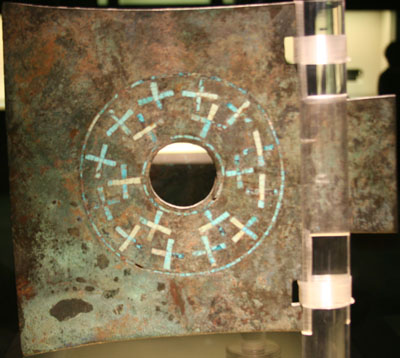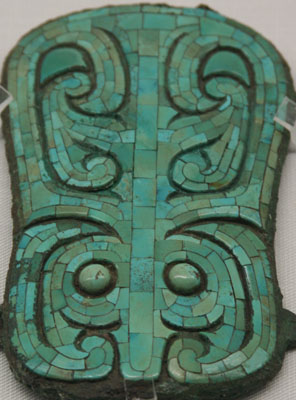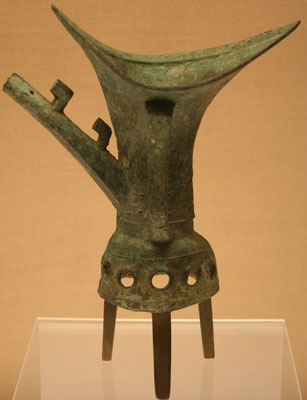Decorative Designs in Chinese Art 中国文物的纹饰
Bronze Ware 青铜器 Xia Dynasty 夏朝
Click on any word to see more details.
Xia Dynasty 夏朝
The Bronze Age in China started with the Xia Dynasty in about 2,100 BCE. Ancient Chinese literature refers to nine large bronze ding that were ordered to be cast by the founder of the Xia dynasty, Yu. They were later passed down in the Xia, Shang, and Zhou dynasties but were lost when a ship carrying them sunk. There are relatively few historic records from the Xia dynasty and bronze ware is a key source of information about this period. Many archeological discoveries were made in Erlitou, thought to be the capital of the Xia dynasty.

Bronze ware artifacts were important possessions and indicators of social rank in the Xia, Shang, and Zhou dynasties. One of the reasons that bronze ware is better preserved than other historic artifacts is corrosion resistant material property of bronze. In addition, bronze is tough enough to survive where pottery and other materials break. These artifacts from the Xia Dynasty, over three thousand years old, have survived well.

Bronze was occasionally inlaid with gemstones, such as in the ornament above. However, most bronze ware at this stage was for vessels used in ceremonies that were central to the culture at this period. Jue 爵, such as the shown below, are a kind of wine vessel and are among the most commonly discovered artifacts from the early Bronze Age.
Chinese
Pinyin English
